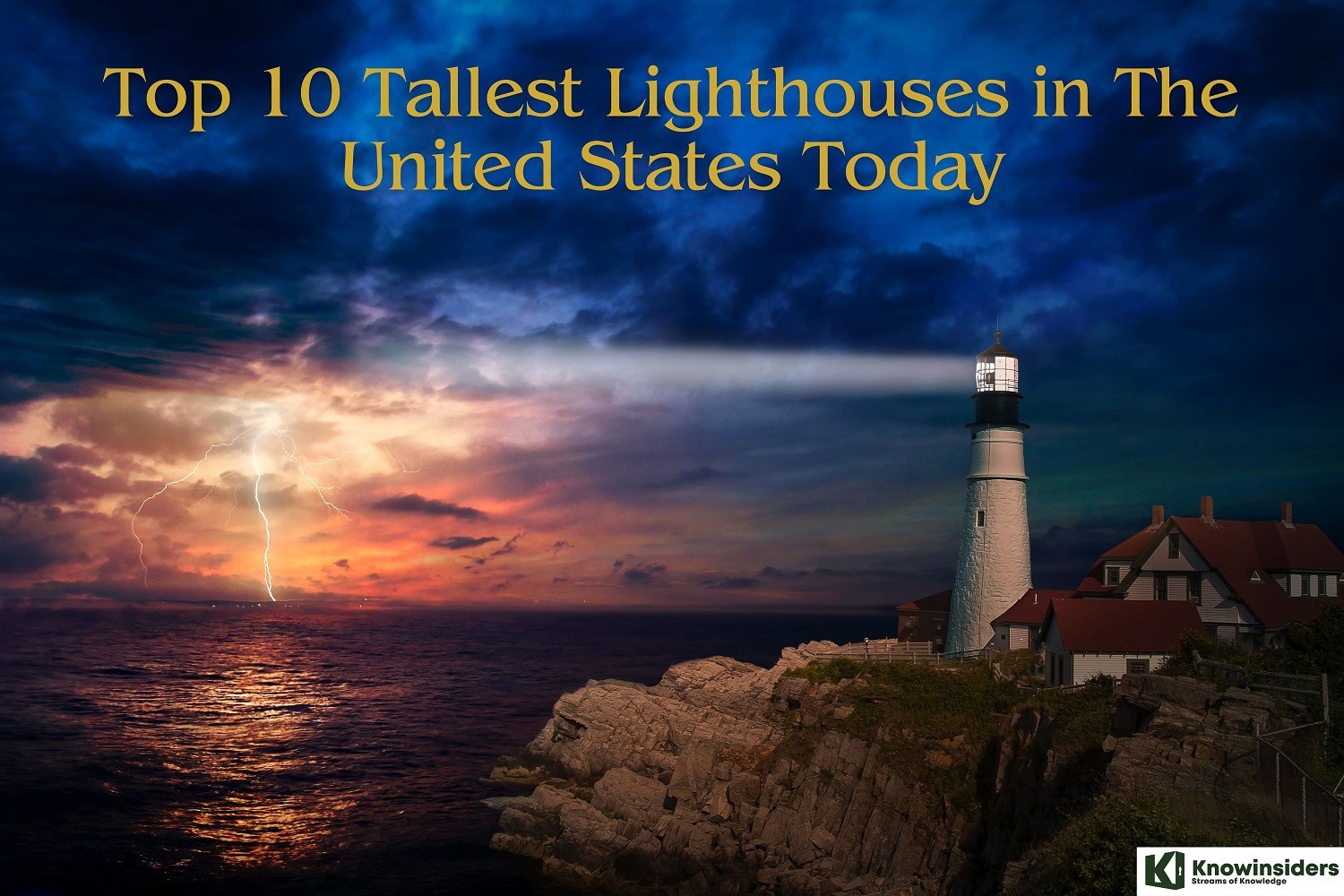Top 10 Largest and Beautiful Deserts In The United States
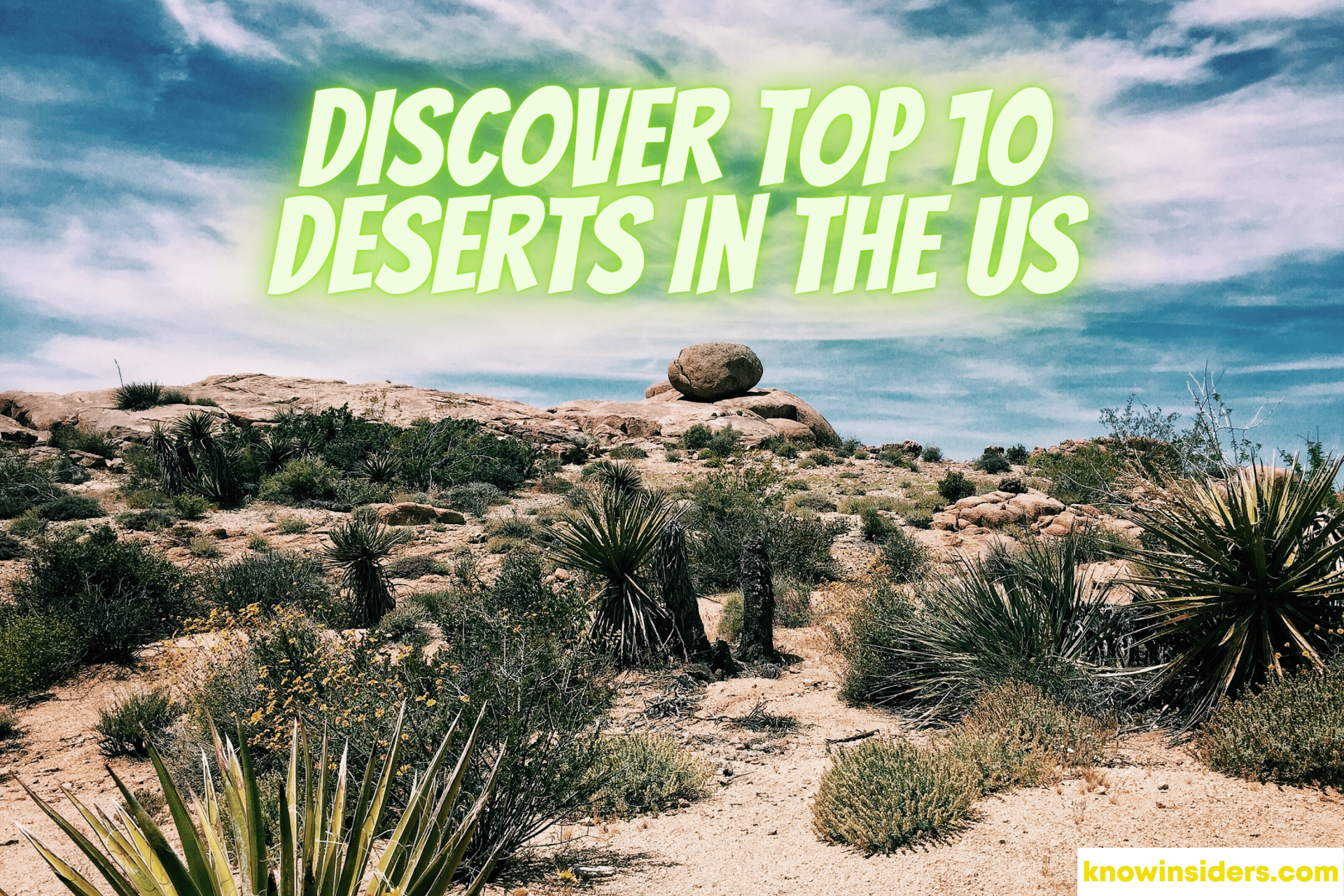 |
| Discover Top 10 Deserts In The United States. Photo KnowInsiders |
| Table Content |
A desert is defined as any place on earth which receives extremely low precipitation (i.e. rain or snowfall). A desert typically receives less than 40cm (16 inches) of precipitation per year.
There are two types of desert i.e. hot deserts and cold deserts. The cold deserts are found in the polar regions of the earth. They are the Arctic and Antarctic deserts. The cold deserts are also referred to as polar deserts.
The List of Top 10 Largest and Beautiful Deserts In The United States
1.Atacama Desert
2.Baja California Desert
3.Chihuahuan Desert
4.Colorado Desert
5.Great Basin Desert
6.La Guajira Desert
7.Mojave Desert
8.Patagonian Desert
9.Sechura Desert
10.Sonoran Desert
***
What Are The Largest and Beautiful Deserts In America?
1.Atacama Desert
 |
| Photo Getty |
One of the world’s driest places, the Atacama Desert stretches between the Andes Mountains and the Pacific Ocean in Chile. This vast, arid piece of land covers more than 41,000 square miles and encompasses rocky volcanoes, immense salt lakes, and endless rolling sand dunes. One highlight is the incredible Moon Valley, a cavernous landscape outside San Pedro that earns its name with its pockmarked terrain. The Atacama Desert is also known for its impressive stargazing opportunities — some of the best in the world.
| There are parts of the Atacama Desert in Chile where no rain has ever been recorded. Scientists believe portions of the region have been in an extreme desert state for 40 million years — longer than any other place on Earth. And yet more than 1 million people live in the Atacama today. Farmers extract enough water from aquifers and snowmelt streams to grow crops and raise llamas and alpacas. |
2.Baja California Desert
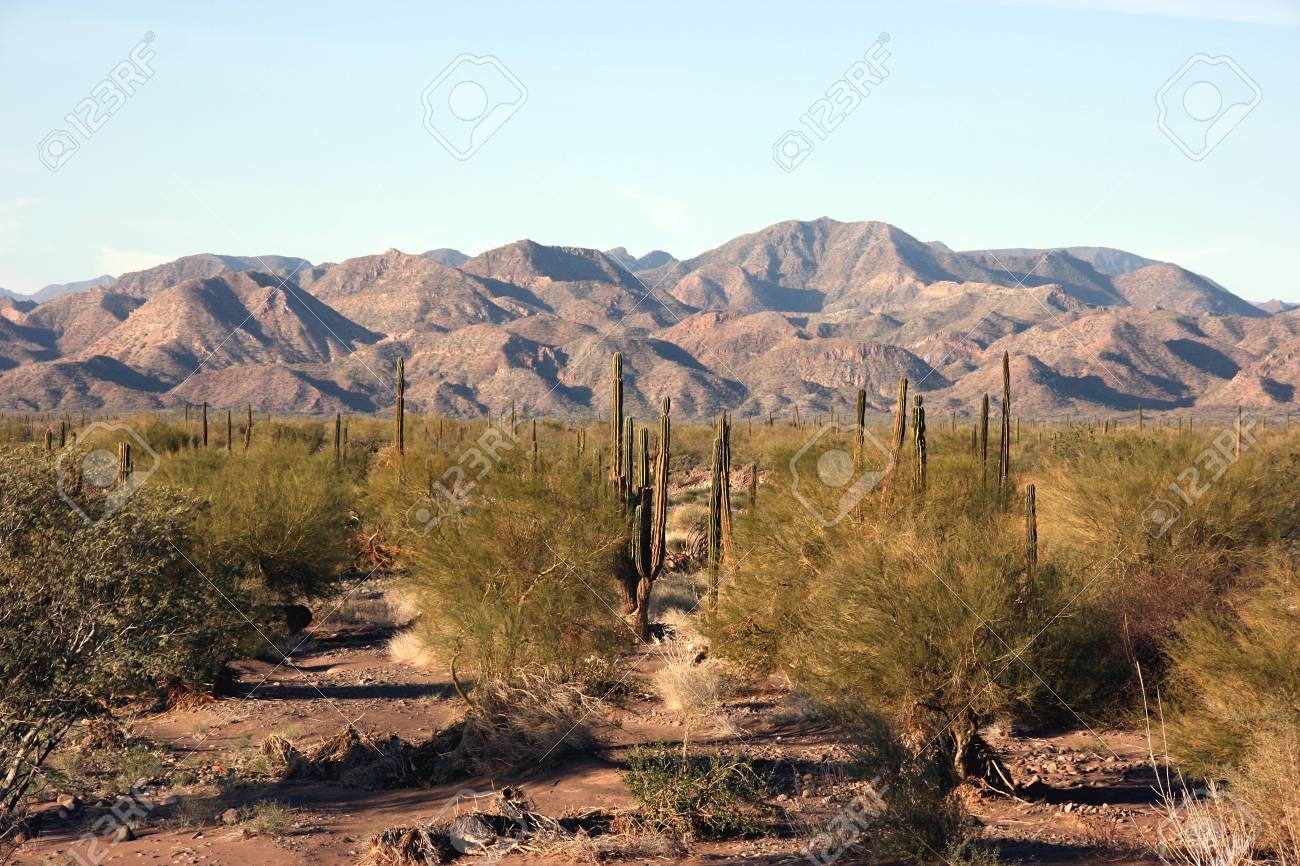 |
| Photo 123rf |
You can find the Baja California Desert in the Mexican states of Baja California and Baja California Sur. The desert covers much of the Baja Penninsula’s western slope, but its proximity to the Pacific Ocean moderates the temperature, making the landscape a bit more hospitable to plants, animals and people. Beachside resorts, bustling towns and a vibrant tourism economy make the Baja California Desert a popular destination for vacationers who flock to spots like Espiritu Santo Island for some fun in the sun.
| There are four major North American deserts: the Great Basin Desert, Mojave Desert, Sonoran Desert and Chihuahuan Desert. All are located in the southwest of North America and correspond, roughly, with the geological region known as the Basin and Range Province. |
3.Chihuahuan Desert
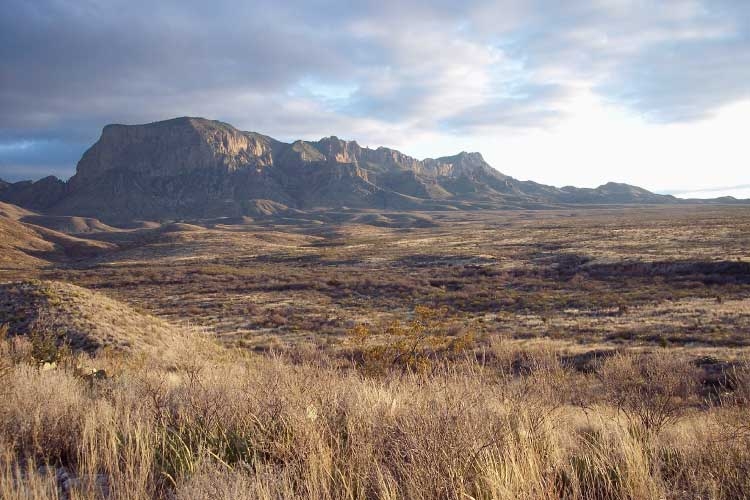 |
| Photo oyster |
The Chihuahuan Desert runs between the US and Mexico and is comprised of an area of 139,769 square miles. The majority of this desert is located in Mexico. On the US side, it can be found in Texas, Arizona, and New Mexico.
The Chihuahuan Desert has a unique and ever-changing landscape. Its highest point is measured at 12,139 feet above sea level, while its lowest point is at 1,969 feet above sea level. Although an arid desert, it is home to several plant and animal species, including: prickly pear cactus, agave, creosote bush, and yucca. Approximately 800,000 acres of this desert are protected by the Big Bend National Park. The Rio Grande River crosses the Chihuahuan Desert, providing a much-needed source of water before emptying into the Gulf of Mexico.
READ MORE: Top 9 Largest Deserts In The World
4.Colorado Desert
California’s Colorado Desert covers more than 7 million acres and is part of the much larger Sonoran Desert. The desert enjoys warmer temperatures than other, higher-elevation deserts, meaning you won't find normally snow dusting this landscape. Wildlife is plentiful throughout the region and includes deer, jackrabbits, bobcat, and the rare desert tortoise. There are many state and national parks in the region, including Anza-Borrego Desert State Park, which is known for its wildflower blooms.
5.Great Basin Desert
The Great Basin Desert covers an area of around 190,000 square miles, making it the largest of the major US deserts. It is considered a temperate desert that experiences hot and dry summers with cold and snowy winters. This effect is in part due to its higher than average elevations: encompassing Arizona, California, Utah, Oregon, and Idaho. During most of the year, the Great Basin Desert is dry because the Sierra Nevada mountains block moisture from the Pacific Ocean. This desert is home to the oldest known living organism in the world, the Bristlecone Pine tree. Some of these trees are estimated to be over 5,000 years old.
| Of the four main deserts located in the United States, Great Basin National Park is located in the Great Basin, the only "cold" desert in the United States, where its precipitation falls in the form of snow rather than rain. It is the largest desert in the United States, at 190,000 square miles, and it is bordered by the Rocky Mountains on the east and the Sierra Nevada Range on the west. The park is full of Bristlecone Pines, since they are able to grow and thrive in this harsh environment, with its cold temperatures and high winds. |
6.La Guajira Desert
Located in northern Colombia and Venezuela, the La Guajira Desert is populated by xeric scrubland that reaches to the ocean. The region is home to indigenous Wayuu people, and is rich in culture and history. The La Guajira Desert and the surrounding landscapes are wild and isolated, and although tourism is increasing, it is largely focused on a few small pockets of the immense landscape. The extremely isolated Macuira National Nature Park, for example, is like an oasis in the desert and is known for its diversity of bird populations as well as its mountainous terrain.
7.Mojave Desert
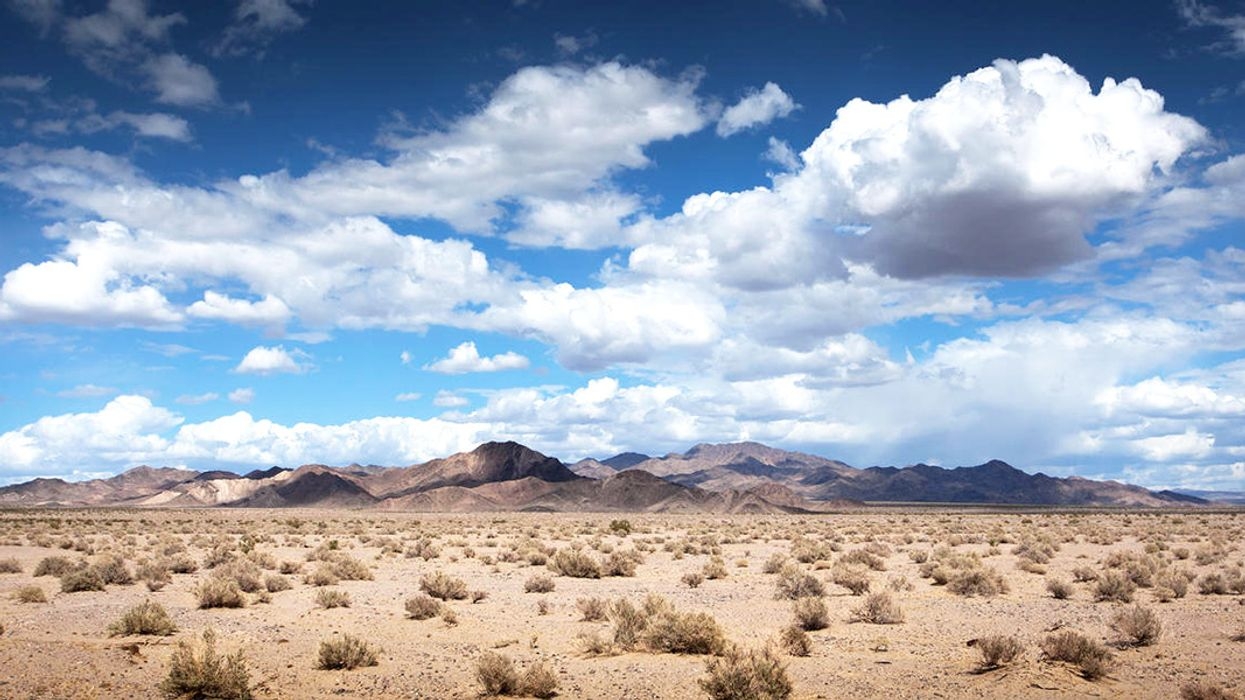 |
| Photo Ecowatch |
The Mojave Desert stretches across Nevada, Arizona, and California, covering 47,877 square miles. It receives under 2 inches of precipitation every year, which makes this desert the driest in North America. The hottest temperature recorded here is 134° fahrenheit.
Across its wide expanse, the Mojave Desert experiences a significant change in elevation. The highest point located here is the Telescope Peak at 11,049 feet above sea level. In contrast, the lowest point is Death Valley, at 282 feet below sea level. One of the most famous features of this desert is the Joshua Tree, which is native to the Mojave and is found along its borders. This tree is considered to be an indicator species that is believed to provide life to between approximately 1,750 and 2,000 other plant species
| The Mojave Desert is North America’s driest and smallest desert. It covers an area of approximately 48,000 square miles (124,000 km2). It is located mostly within southern Nevada and south-eastern California. To its north lies the Great Basin Desert, and to the south lies the Sonoran Desert. Interestingly, one of the valleys found in the Mojave, Death Valley, is the lowest place in North America, being 280 ft (85 m) below sea level. Death Valley is one of the hottest places on earth. |
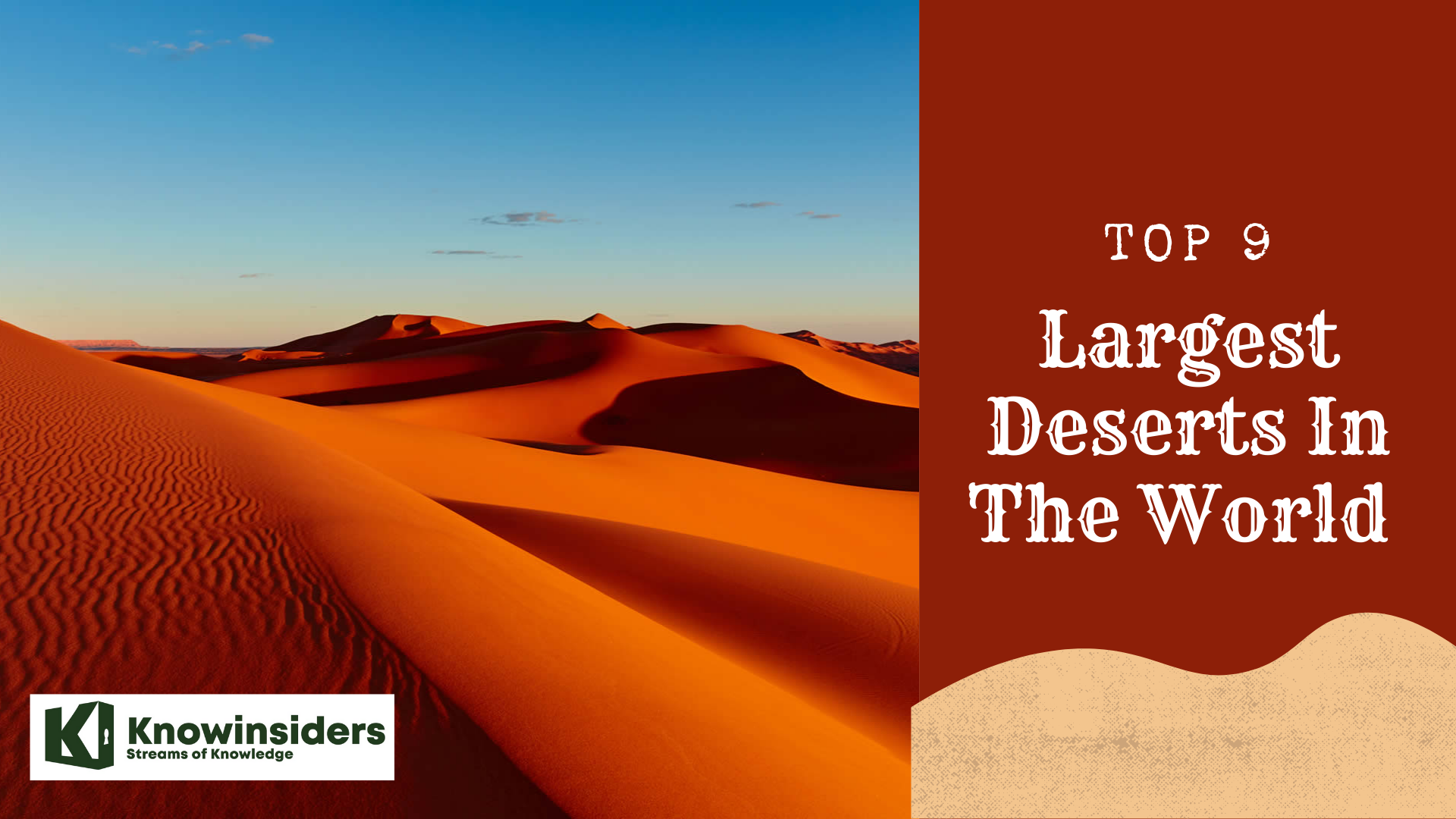 Top 9 Largest Deserts In The World Top 9 Largest Deserts In The World Covering approximately one-third of our planet’s land surface, deserts are a defining geographical phenomenon. Here are th top 9 largest deserts in the world. |
8.Patagonian Desert
 |
| Photo 123rf |
Encompassing more than 260,000 square miles, the Patagonian Desert can be found primarily in Argentina with some areas stretching into Chile. Bordered by the Atlantic Ocean to the east and the Andes Mountains to the west, the desert is home to many distinct ecosystems, including grasslands, deep river canyons and wide steppes. Unlike many American deserts, the climate here is often cold, although it rarely snows. The opportunities for recreation in Patagonia are endless, and it is widely known as a mecca for trekkers and climbers. For a real adventure, consider road tripping on the long and winding route 40, which brings you through the desert, but also past lush forests, towering mountains, and crystal lakes.
9.Sechura Desert
Located along the Pacific Ocean in Peru, the barren and beautiful Sechura Desert is one of the driest places in the world. Summers are warm and sunny, with temperatures often reaching 95 degrees Fahrenheit. Winters are more temperate but rarely cold. This is a largely lifeless desert — bleak, isolated, and characterized by endless stretches of dunes. The desert's biggest claim to fame are the Nazca Lines, a series of ancient etchings in the desert's barren, flat terrain.
10.Sonoran Desert
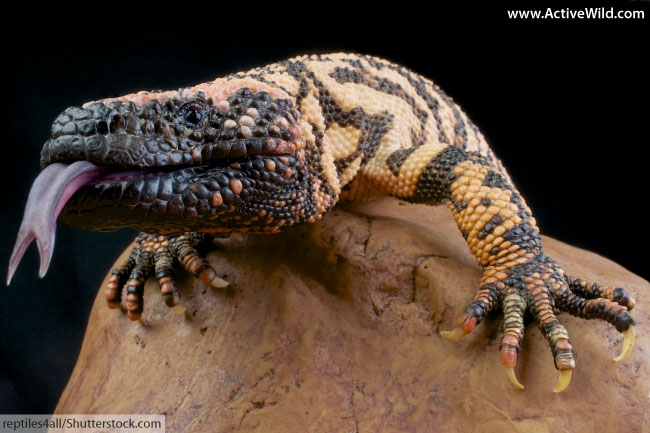 |
| The Gila monster is a lizard found in the Sonoran Desert. Photo Shutterstock |
The Sonoran Desert spreads from Mexico through Arizona and into southern California. It covers an area of around 100,000 square miles, bordering the Mojave Desert, the Peninsular Ranges, and the Colorado Plateau.
The lowest point in the Sonoran Desert is the Salton Sea, which is 226 feet below sea level and has a higher salinity level than the Pacific Ocean. Other sources of water for this desert include the Colorado and Gila Rivers. One of the most famous features of this desert is the Saguaro Cactus, which only grows here. It can reach over 60 feet in height and grows branches from its main trunk, resembling human arms. Its flowers are pollinated by bats, bees, and white-winged doves.
| North American Desert Animals Many hundreds of different animal species make their homes in the North American deserts. Because of the aridity, all the animal inhabitants have to get their water from their food; what water there is, is often salty and unsuitable for drinking. The stems and leaves of succulent plants provide water and food for many insects and these, in turn, support insectivorous birds, bats and lizards, such as chuckwallas. Small rodents, for example kangaroo rats and ground squirrels, are able to make water from the seeds they eat, and excrete very little water in their waste. Desert birds must also get moisture from the spiders, insects, fruits and seeds that they eat, although they can fly to water sources if necessary. For most of the animals though, avoiding the extreme temperatures is a more serious problem. Rodents, foxes and skunks all forage at night and spend the day asleep underground. Most desert reptiles, for example the Gila monster, and all the amphibians, are also nocturnal in order to avoid the heat. In addition, they hibernate in underground burrows during the seasons when temperatures are too extreme. Jackrabbits have enormous ears that contain many blood vessels – heat lost through the ears helps to cool the rabbit. A similar adaptation is seen in the kit fox. The smaller mammals are preyed upon by coyotes, bobcats, snakes and owls, most of which also have to be active at night in order to catch their prey. There are a few large mammal species, that also live in these deserts: bighorn sheep inhabit the rocky mountain sides in the Mojave and Sonoran Deserts, while pronghorn antelope follow migration paths that take them into the deserts after rains have brought about the growth of annual plants. Even mountain lions make their homes in the harsh mountain ranges of the North American deserts. |
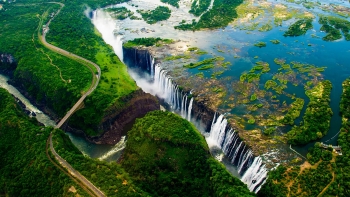 Discover The 7 Natural Wonders Of The World Discover The 7 Natural Wonders Of The World What are the 7 Natural Wonders of the World? Where are they? To have more detailed information, check out right below! |
 20 Archaeological Discoveries - Incredible & Amazing of All Time 20 Archaeological Discoveries - Incredible & Amazing of All Time The following list of 20 Incredible & Amazing Archaeological Finds will take you on a trip through time and across the globe. |
 A discovery of five Blue Zones' secrets for a high life expectancy A discovery of five Blue Zones' secrets for a high life expectancy It always begs a question about the mysterious secret underlying Blue Zones civilians' long life expectancy. Given information below would provide a deeper understanding about ... |




